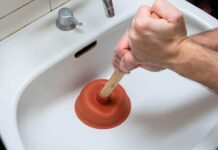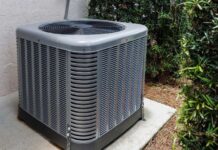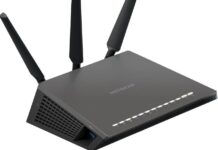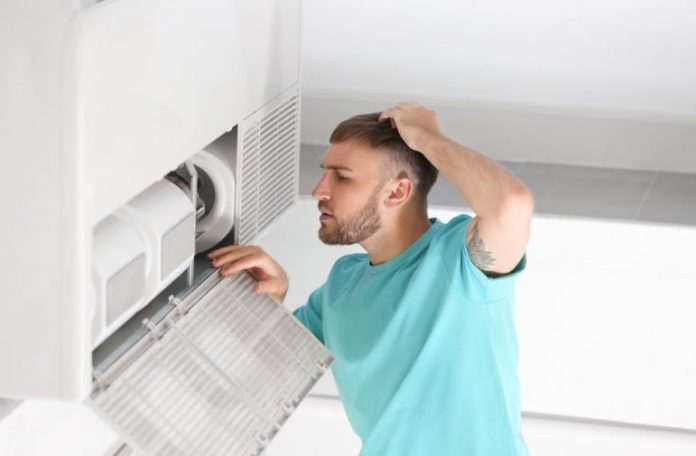Air Conditioner repair and replacement may seem like a mystery to most homeowners, but because 90% or more of US homes have air conditioning, it’s a good idea to get familiar with the basics.
If you’ve noticed issues with your air conditioning unit, it may be time to saddle up and prepare to do a little at-home AC maintenance and HVAC repair. The average homeowner can easily tackle a wide range of common air conditioning issues, and in many cases, there’s no need to contact professionals.
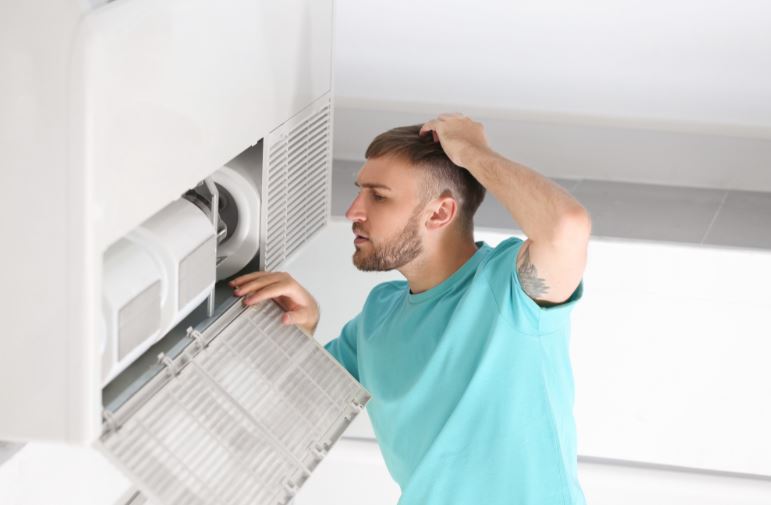
While some tasks, like duct maintenance, will require expert assistance, there are plenty of things that anyone can do to improve their AC unit’s efficiency. Keep reading to discover some of the best AC repair tips and tricks.
15 Tips for Home Air Conditioner Repair
Most of the following repairs will only require a pair of gloves, a trash bag, and a screwdriver. Still, be sure to prepare adequately for each task before getting started. Also, follow safety guidelines to avoid hazards.
Let’s see the Air Conditioner Repair Tips and Tricks to Try…
1. Check Your Wiring and Breaker Box
Frayed wires or tripped breakers can spell trouble for any electronic device. Some AC issues might be solved by visiting a home’s breaker box and checking for blown fuses or faulty wiring. Of course, if there are significant electrical issues, it’s best to contact a certified electrician for assistance.
2. Get Rid of Debris
Outdoor compressors seem to attract all kinds of debris. Rotting leaves, dead twigs, and insect carcasses are all standard surprises that the average tenant is likely to find when cleaning out a compressor.
Once the AC unit has been safely shut off, you can begin removing the AC fan or upper grill to gain access to the debris. Put your protective gloves on before removing dead leaves and yard material from the compressor. Your hands will thank you!
During this step, it’s smart to keep a lawn garbage bag handy.
3. Clean or Replace Your Filters
One of the facts of life is that anything clean will eventually become dirty. That’s nothing to fear, especially since most AC units have removable, replaceable, or washable filters. Changing a home’s in-home air filter at least once a month is vital, but it’s also a great idea to check additional AC filters for dirt, dust, wear, and tear.
Start by measuring the used filter in your home. With these measurements in hand, you can begin searching for the right replacement filter. Be careful with specialized HEPA filters, as they may be thicker than standard models.
The thicker the screen, the more dust and allergens it can remove from the air. However, this can also reduce the ease of airflow, putting additional strain on a home’s air conditioning system.
4. Open Indoor Vents and Monitor Outdoor Ones
Indoor vents, also known as registers, can become blocked, clogged, or closed. When this happens, there’s nowhere for the moving air to travel to, creating a pressurized environment in a home’s duct system. This pressure can negatively impact a unit’s efficiency and lead to costly repairs.
Checking all vents to ensure that they’re open and unblocked is a significant first step. However, those who live in homes with dryers and washing machines should also check their exterior vent for issues. When the hot air from these machines has no exit, it can lead to dangerous fire hazards.
5. Shut-Down and Heat-Up
When an air conditioning unit is in near-constant use, its internal components can develop some problems. One of the most common of these issues is a frozen coil. Turning the entire system off for several hours will allow parts to rest and thaw.
Always clean the coil drain pan before turning the unit back on. Doing so will prevent moisture build-up and help keep the internal parts clean.
Check Also: 12 Tips to Save Money on Air Conditioner
6. Replace a Faulty Fan Motor
Most outdoor compressors are equipped with an internal fan. However, this fan is likely powered by a simple motor. These motors can fail over time, necessitating a replacement. Fan motors are relatively simple to procure and replace, though it may help to have an electrician handy for some of the most complicated steps.
7. Clean the Coils
In addition to becoming icy, coils can become rusty, dirty, and generally pretty gross during their time in AC isolation. Taking a commercial coil cleaner to this grime is a fantastic way to keep coils looking and working their best.
Most coil cleaner solutions will form a thick, bubbling layer of dirt. Allow this bubbling to continue for several minutes, and watch as dirt melts away from the coil and into the drainage pain. Then, enjoy your super-functional coil!
8. Destroy Clogged Drains
Okay, so you don’t want to destroy clogged drains literally, but you do want to clean them. Because a wet-vac is required for this task, it may be better (and less messy) to simply hire a team of HVAC professionals.
Still, for those determined to unclog their evaporator drain, it’s as simple as locating it, connecting a wet-vac suction to it, and waiting for the clog to arrive.
9. Seek Professional Duct Cleaning and Maintenance
Sometimes, to repair an AC unit, you’ll have to contact a team of professionals who have the equipment and experience to tackle a complicated job. When attempting to clean out HVAC air ducts, it’s crucial to call for help. Not only is it difficult for the average homeowner to complete it successfully, but it can also be dangerous.
Professional duct cleaning and maintenance services can improve air quality in a home. They can also reduce strain on a unit, resulting in more efficient cooling and heating.
10. Do Some Landscaping
Check the area surrounding your AC unit’s outdoor compressor. If there are lots of plants, vegetation, and organic debris, you may want to do some landscaping. Compressors do best when they’re clean, debris-free, and open to fresh breezes.
That means that a compressor surrounded by bushes or trees is likely to experience serious issues. Some simple landscaping decisions could extend the life of a unit, saving tons of time and frustration.
Check Also: 4 Amazing Benefits Of An Air Conditioner To Your Home
11. Keep Things Level
A compressor can start exhibiting issues when it’s on an unlevel surface. The coils inside an outdoor air conditioning compressor are very similar to the ones inside a refrigerator. To consistently and efficiently work, these coils must remain upright and level at all times.
Homes built on limestone foundations are particularly prone to this type of issue due to the slow ground sinking. A typical bubble leveler can help homeowners ensure that their compressor is on solid ground.
12. Check Outdoor Compressor’s Connections
Sometimes, a compressor’s connections are damaged, causing electrical failure. Checking that these connections are in good shape, and still connected, is an easy way to figure out why an air conditioning unit is no longer turning on. Sadly, electrical issues can be a challenge for the average resident.
Still, a professional electrician or AC repair team can help anyone safely solve these issues quickly.
13. Replace the Batteries
Many modern thermostats run on batteries. It’s easy to forget that fact while desperately trying to figure out why the AC isn’t working. A laminated Post-it note or helpful embroidery can help homeowners remember to check their thermostat’s batteries first.
14. Straighten the Compressor Fins
The tiny metal fins that surround an outdoor compressor can quickly become bent, warped, and twisted. Keeping these fins straight ensures maximum airflow into and out of the compressor. When air is flowing freely, the unit can ‘relax’ a little.
This allows the unit’s condenser to naturally de-ice, immediately increasing airflow quality and strength in the home. While a special fin comb may be the best option for some residents, a metal butter knife typically works just as well.
Like many of the repairs and maintenance tasks listed here, it’s essential to shut off the AC system before completing this chore. Doing so will eliminate a wide variety of potential hazards and dangers, including electrocution.
15. Adjust Temperature Settings
Improving an AC unit’s performance may be as simple as adjusting the home’s thermostat temperature settings. Accidents do happen, especially in households with young children or heat-sensitive teenagers. Always check to see that your thermostat is set to ‘cool’ and that the desired temperature is at least three degrees lower than the surrounding air temperature.
Of course, it’s always wise to resist setting a thermostat to an extremely hot or cold level, as it can cause a unit to overwork itself, resulting in failure.
Repairing an Air Conditioner Unit Doesn’t Have to Be a Hassle
As anyone can see, there are tons of options available for homeowners looking to do some necessary repairs and maintenance on their AC systems. From removing dead leaves and twigs to cleaning the condenser coil, there are more than a dozen simple ways to improve the overall health of an AC unit.
And for tough jobs, Air Conditioner repair could be as simple as contacting a team of professionals. Hope this article will give some best ideas to repair Air Conditioner by homeowners. For more articles about home health, check out our related articles now!



